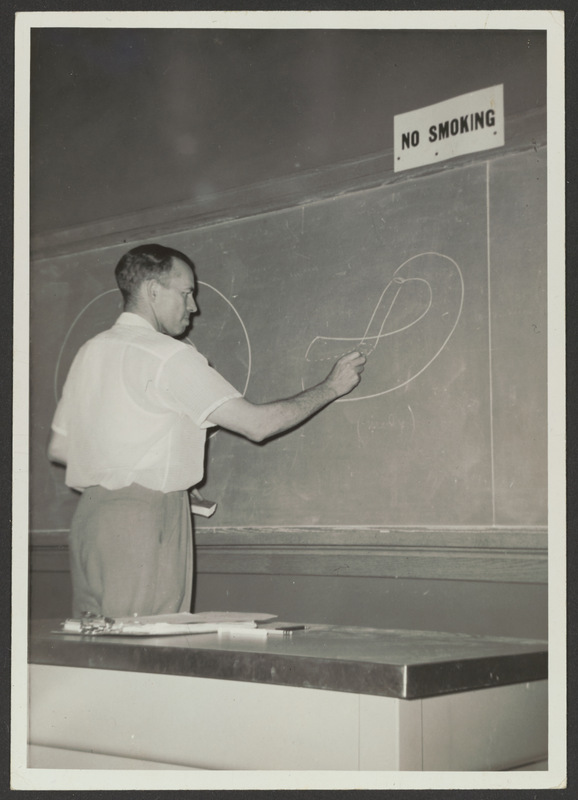The Bing Metrization Theorem, 1951
In topology, a metric space is a space that has a concept of “distance,” or a distance function, associated with it. A very large open question is determining under what conditions or circumstances one is guaranteed to have such a space. Bing’s Metrization Theorem (also known as the Bing-Nagata-Smirnoff Theorem) was an important early result in trying to determine which spaces have that distance function. He found that a topological space is metrizable if and only if it is regular and has a σ-discrete basis. A σ-discrete basis is a basis that is the countable union of collections of sets, each collection having the property that any point has a neighborhood that intersects at most one member of the collection.
"I have long been interested in metrization problems. When I was a graduate student at The University of Texas, I worked on the problem as to whether or not every normal Moore space is metrizable. This question had been called to [fellow mathematician Edwin E. Moise's] attention when he was visiting a meeting of the American Mathematical Society in New York...In fact, Moore himself let it be known that he had a solution. An examination of his archives in the Humanities Research Center at The University of Texas showed that his write-up had a gap.
I found many results about normal Moore spaces and finally decided to publish a paper telling what I knew, even though I had not gotten a complete result...
My paper contained the result that a Moore space is metrizable if it is collection-wise normal. It also contained a necessary and sufficient condition telling when a Hausdorff space is metrizable. It turned out later that both Smirnoff from Russia and Nagata from Japan had gotten similar results at about the same time. This suggests that when it is time for a new result to be born, and that if one person does not get it, another person is likely to. No research mathematician is indispensible for progress in mathematical research."
